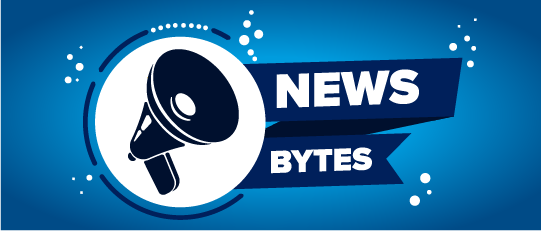For WorldatWork Members
- Rewarding the Modern Sales Organization, Workspan Magazine article
- Incentive Goal Setting is Becoming More Flexible, Journal of Total Rewards article
- Sales Compensation Plan: Organizational Inventory, tool
- Sales Performance Management, research
- Sales Compensation Programs and Practices, research
For Everyone
- The Checkup: Diagnosing and Optimizing Your Sales Compensation Program, Workspan Daily article
- Sales Comp Considerations: Choosing Between Individual, Team Measures, Workspan Daily article
- Don’t Be a Sales Compensation Benchwarmer: 5 Paths to Pitch In, Workspan Daily article
Given the persistent economic volatility, increasingly cloudy financial targets and continuously evolving employee expectations around transparency, many organizations are re-evaluating how they drive alignment and motivation. In this environment, short-term incentive (STI) plans should both encourage results and signal organizational priorities.
Pearl Meyer surveyed nearly 280 organizations recently to assess how organizations are communicating their STI plans to participants. Interestingly, the consulting firm’s survey findings highlight a disconnect. While organizations invest heavily in plan design, most fall short in ensuring participants understand what is expected, why it matters or how individual actions contribute to outcomes. These findings reveal a key strategic opportunity for HR and total rewards leaders.
Only 28% of survey respondents are very confident that their plan participants understand what activities and outcomes drive their STI payouts (e.g., bonuses, commissions, profit-sharing disbursements, spot awards).
Rethinking Communication
Effective STI plans can depend on thoughtful design as well as clear, consistent communication — yet many organizations are missing that critical second piece. According to the study, only 28% of survey respondents are very confident that their plan participants understand what activities and outcomes drive their STI payouts (e.g., bonuses, commissions, profit-sharing disbursements, spot awards). A majority (56%) reported only moderate confidence, and 17% acknowledged having little or no confidence at all.
These results point to an opportunity to re-evaluate how STI plans are communicated — in both content and cadence. By changing the level of information shared, how often that information is provided and through which channels it is delivered, organizations can improve alignment, reinforce their strategic priorities and increase plan effectiveness.
A lack of clarity around STI plans may be a potential drag on performance, especially during times of evolving business priorities and persistent retention pressures. Employees may struggle to fully align their efforts with the financial and strategic goals of the business without a clear understanding of:
- Plan intent — why certain performance metrics (e.g., sales volume, new product adoption), profitability (e.g., operating income, margin expansion, cash flow) cost efficiencies (e.g., production output, supply chain optimization), strategic priorities (e.g., new product development, sustainability), operational and stakeholder outcomes (e.g., safety performance, customer satisfaction, employee engagement) are chosen and how expectations align with goals
- Mechanics — metric weightings, calculation methodology, whether it’s purely formulaic or if discretion is applied
- Individual expectations — what workers need to do in their jobs to influence award payout drivers
Further reinforcing this concern, fewer than half of respondents said their organization provides full transparency into performance metrics at the start of the year, and even fewer said it offers regular updates on progress or potential payouts. These gaps highlight a clear opportunity: With stronger, more consistent communication, STI plans can far more effectively drive the behaviors and outcomes they are designed to reward.
Survey results pointed to several key areas where communication breakdowns are most common:
- Metrics are shared, but the rationale and relevance are missing. While 55% of organizations communicate STI metrics and goals at the start of the year, fewer than 1 in 4 explain why they were selected. Only 17% go further to outline how individuals can influence results. Without this context, the plan lacks motivational power and becomes difficult for employees to internalize.
- Updates are infrequent and line-of-sight is weak. Fewer than half of organizations share STI updates with all participants, often limiting communication to senior leaders or skipping updates entirely. Even among those that provide updates during the year, 1 in 5 offer only vague progress reports or general commentary. This lack of specificity makes it difficult for employees to connect their day-to-day performance with potential outcomes. Without timely and relevant updates, participants are left guessing how they’re doing and what it means for their potential award payout, which dampens motivation and limits their ability to adjust behavior to meet goals.
- Perceived legal risk may be overstated. Although material non-public information (MNPI) is often cited as a reason for limiting STI plan communication, only 19% of organizations said it plays a role in their current approach. In contrast, more than half reported being comfortable with their existing content and cadence. This suggests organizational habits may be greater obstacles than regulatory concerns.
- Managers are underused as communication channels. Most organizations rely on top-down, presentation-based formats to deliver STI updates, and manager-led communication is notably rare. Only 1 in 6 organizations clearly articulate how individuals can influence STI goals through their specific roles, suggesting frontline managers aren’t equipped to deliver meaningful messages about the plan. The survey suggests this gap exists because managers often lack the tools or guidance to communicate clearly and confidently. Failing to engage managers as communication partners, given their proximity to performance conversations, can be a missed opportunity to strengthen alignment and reinforce goals and priorities.
- Most organizations haven’t evolved their approach. Despite increasing business complexity and rising employee expectations, two-thirds of organizations reported their STI communication strategy hasn’t changed in recent years. Just 1 in 4 took steps to become more transparent, even as they generally emphasize alignment, motivation and clarity around a pay-for-performance strategy.
Actionable Takeaways
Based on the survey findings, here are five tips to strengthen STI communication and impact:
- Evaluate comprehension across roles. Don’t assume all participants fully understand the STI plan. What may seem clear on paper can be interpreted differently depending on role, level or function. Actively assess comprehension by gathering feedback through manager check-ins, quick surveys or informal focus groups. These insights can uncover areas of confusion and guide more targeted communication around the plan’s purpose, mechanics and expectations.
- Clearly explain the rationale behind each STI metric and the related performance targets. Make specific ties to the organization’s strategy and help participants understand why it matters in the current business context. When employees see the connection between what they are being asked to achieve and the organization’s priorities, the plan becomes more meaningful and actionable.
- Help participants see how their day-to-day work contributes to incentive outcomes. Use practical, role-specific examples to illustrate how different functions and levels can influence the plan metrics. For example, explain how a customer service representative can impact a customer satisfaction score or how a plant supervisor influences operational efficiency. When employees understand their line-of-sight to the goals, the plan feels more relevant and achievable, encouraging more intentional efforts toward meeting or exceeding performance targets.
- Provide regular updates on STI performance throughout the year. Consider setting quarterly touchpoints to share progress toward goals, highlight key drivers and reinforce priority areas. Transparency should strike a balance by offering enough detail to make the information meaningful and actionable while avoiding unnecessary disclosure. Consistent, well-calibrated updates keep participants informed, engaged and better positioned to influence outcomes.
- Take a fresh look at your communication approach. Evaluate how often you communicate, who delivers the message and through which channels. Involve managers as active messengers, use language that is clear and accessible, and prioritize two-way conversation over one-way presentation.
Closing the Gap Between Design and Impact
Strong STI plans should do more than reward results. They should reinforce what matters most and help focus employee efforts on the outcomes that drive corporate success. But without clear, consistent messaging that helps employees understand the plan’s purpose, mechanics and relevance to their role, even the best-designed programs can miss the mark. This is a good time for organizations to take a closer look at how they communicate, not just what they communicate. Small but intentional changes in message content, timing and delivery approach can help organizations strengthen alignment, sharpen focus and get more from the plans they already have.
Editor’s Note: Additional Content
For more information and resources related to this article, see the pages below, which offer quick access to all WorldatWork content on these topics:
#1 Total Rewards & Comp Newsletter
Subscribe to Workspan Weekly and always get the latest news on compensation and Total Rewards delivered directly to you. Never miss another update on the newest regulations, court decisions, state laws and trends in the field.








